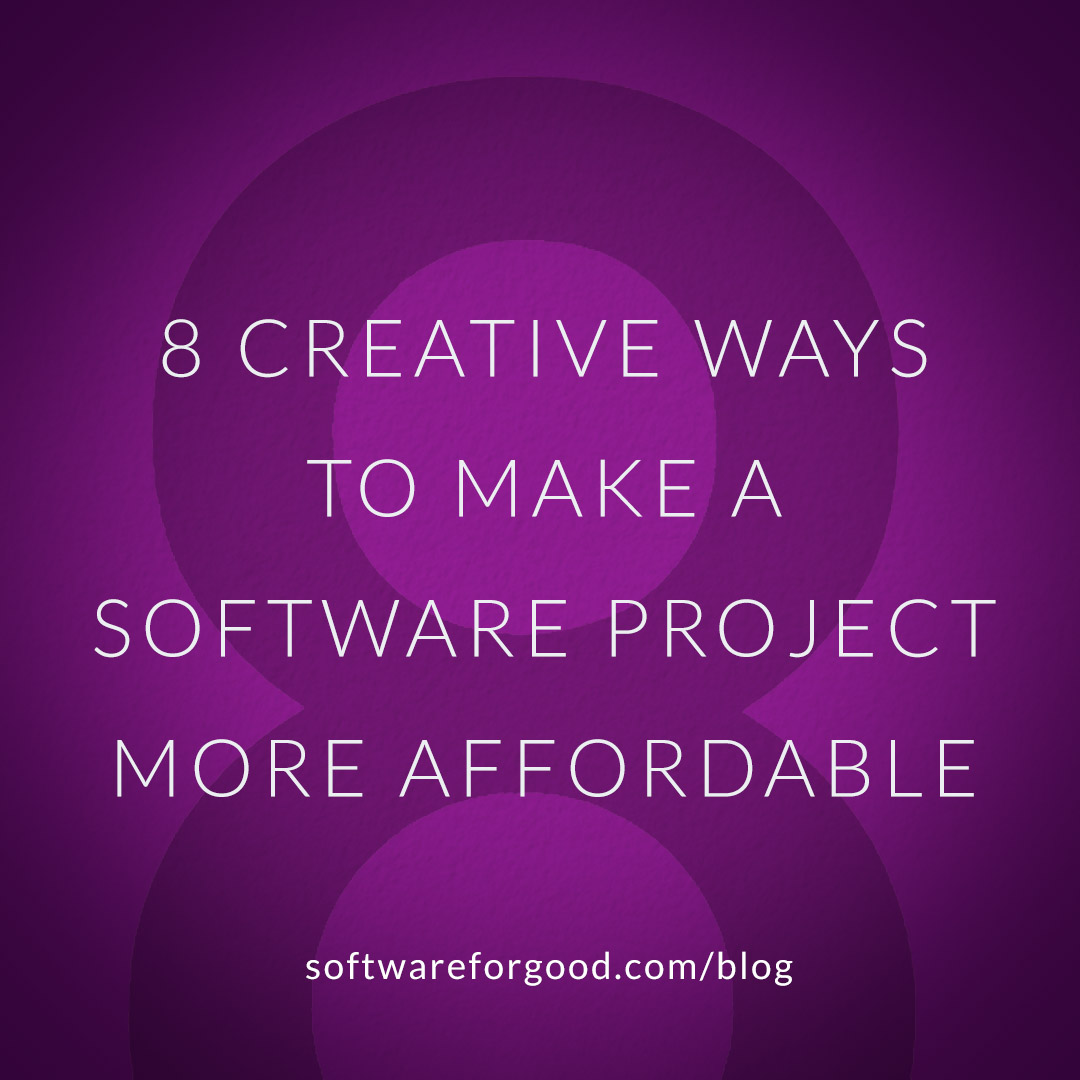Working with nonprofits, social enterprises, and entrepreneurs, we know it isn’t always easy to fit a web or mobile application into your budget. But we don’t want to let funding stand in the way of using software for positive impact.
If you’re thinking about custom tech but not sure about the money, try starting with one of these strategies to make a software project more affordable.
1. Start small.
At Software for Good, we use the Agile methodology and Lean Startup model of building software. We develop by iterating, building a few features at a time and making changes as we go along. And we shoot for a minimum viable product, an initial finished version that can go public (or at least be tested with real users) as soon as possible. Focusing on the MVP means thoughtfully prioritizing the features that are most important.
It’s a lot easier to fit software into your budget when it doesn’t have to be big and complicated and perfect right away. You can start small with a simple minimum viable product, begin using it and getting feedback, and then build on it with new features over time.
2. Talk to lots of users upfront.
The biggest waste of money in software development happens when time and effort are spent on tech that no one actually wants. Maybe you think your audience needs a chatbot, but really they just need a more user-friendly contact form. Maybe you’re trying to organize information in a helpful way, but you’re using jargon that is completely foreign to the people you serve.
Avoid unnecessary expenses by talking to potential users before anyone starts designing or coding. Reach out to people likely to use your application, and ask about their likes and dislikes and needs. Send out surveys; sit down with people in person. You’ll challenge your assumptions and be able to focus efficiently on what’s most important.
3. Upgrade your online presence.
Start testing the waters for new software by making simple, low-cost improvements to your existing online presence. Create a schedule for updating and maintaining your social media and website on a daily, weekly, or monthly basis. Review all your channels to see who you’re reaching and which messages are working well, or pick one channel and focus on improving there.
Covering these basics helps you refine your message, interact with the people you serve, and set the stage to roll out a new website or application.
4. Take your idea to a hackathon.
At hackathons, teams of developers, designers, and people from every sector collaborate to build new technology. If you’ve got a problem to solve and an inkling of how tech could help, try pitching it to fellow participants. While you won’t walk away from a hackathon with a ready-to-go application, you can get feedback on your idea and an exploration of how it would work technically. You might even get to help build a working prototype that you can show to your coworkers, your board, potential funders, and eventually a team of developers.
Never been to a hackathon? The Twin Cities hosts a few that are focused on social and community issues and open to all comers, including Geo:Code and Code Switch.
5. Apply for grants.
Are you dismissing the idea of custom software because of the money? Don’t worry — there are ways to raise funds without digging into your own operations budget. If you have a clear sense of how technology will further your mission, you can apply for grants to cover the cost.
Here in the Twin Cities, the Shavlik Family Foundation focuses its grantmaking on helping nonprofits implement technology. A custom software project could also fall under grants for innovation, community engagement, or launching a new program. No matter what you’re applying for, taking time to think through your goals, users, and potential features first will help you make a compelling case for funding.
6. Fundraise.
You can also raise funds from your supporters to cover a new web or mobile application. While crowdfunding and more traditional fundraising campaigns certainly take time and effort, it can help to focus an appeal around a tangible project. Again, you’re more likely to be successful if you have a good sense of your goals and users — and perhaps even a working prototype — before launching a campaign.
7. Find a program designed to offer software on a budget.
Software firms sometimes offer discounted software for mission-driven organizations. Software for Good’s giving and internship program is designed for just that: We work with organizations with a purpose while offering paid, hands-on experience to software development interns. Learn more here about our program and see if it’s a good fit for your org.
8. Add technology to your strategic planning and budget.
A common thread here is that software projects are most successful and cost-effective when organizations think through the purpose and strategy upfront. Before jumping into development or pursuing funding, ask: How do you see technology helping you reach your goals? What problems are you trying to solve? What could a web or mobile app help you accomplish, and how does that relate to other programs, funding cycles, and the needs of the people you serve?
Better yet: Make these questions an ongoing part of your strategic planning and budgeting. You can start to see technology not as an extra expense, but as another tool to help you achieve your mission.

